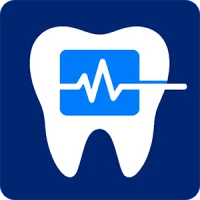
Dental Blog
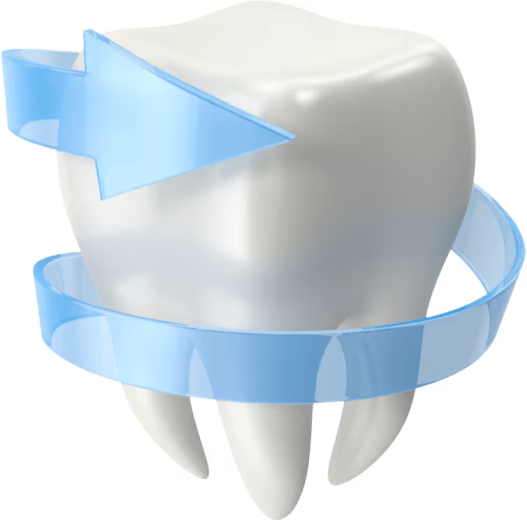

Resources for Dentists
Dive deep into helpful guides and in-depth information about:

Your Resource for Dentistry Insights
Sedation dentistry is evolving. Regulations change, compliance requirements grow, and practices need tools to stay ahead. The Sedate Dentistry Blog is here to help you learn, adapt, and succeed with resources built for dentists, oral surgeons, and office managers.

Explore Topics That Matter

Sedation Dentistry
Learn about sedation dentistry's best practices, compliance tips, and case studies.

Patient Vitals Monitoring
Device integrations, patient monitoring, and technology insights.

Patient Forms & Experience
Intake forms, digital consent, and patient-focused workflows and user experience.

Dental Practice Growth
Grow your dental practice with in depth guides, tutorials, and software reviews.
Recent Guides for Dentists

Compliance Myths in Sedation Dentistry (Debunked)
Compliance isn’t a binder—it’s a behavior the room repeats under pressure. This article debunks the most common sedation compliance myths with plain facts, room-ready checklists, and examples you can paste into your SOPs. You’ll see how to make audits quick, documentation airtight, and safety the default using Sedation visit record software with Patient Vitals Monitor Integrations.
Table of Contents
Compliance Myths in Sedation Dentistry (Debunked)
Myth 1: “Compliance is about having the right forms on file”
Myth 2: “Our team knows the policy—we don’t need rigid checklists”
Myth 3: “Typing vitals later is fine if we wrote them down somewhere”
Myth 4: “Nitrous documentation is optional because it’s ‘just laughing gas’”
Myth 5: “If the patient looked fine, we can discharge by clinical judgment”
Myth 6: “We don’t need concentration and route on every dose entry”
Myth 7: “Interval cadence is flexible if nothing’s happening”
Myth 8: “Capnography is overkill in a dental office”
Myth 9: “Pediatric charts can skip details because doses are tiny”
Myth 10: “If we enter everything at the end, the chart will be cleaner”
What “good” looks like: a one-screen sedation story
Myths about technology that slow adoption
Myths about training and staffing that create gaps
“New hires will pick it up by osmosis”
Myth-busting with data: five KPIs that prove behavior changed
A copy-paste remediation plan when a myth shows up in charts
Compliance problems don’t start with bad people; they start with invisible standards, scattered notes, and “we’ll remember it later” habits. Myths thrive in that fog. Clearing them up—and replacing them with simple, provable patterns—keeps patients safer and audits calmer. Use this guide to replace common misconceptions with practices your team can execute on a busy Tuesday.
Myth 1: “Compliance is about having the right forms on file”
Compliance lives in what you do, not just what you file. A signed consent isn’t proof you monitored at the correct cadence, documented dose concentrations, or met objective discharge criteria. The record must read like the room felt: induction, interval vitals, medications with concentration/route/dose/time/indication/response/totals, events with actions and outcomes, and a checklist-based discharge. Capture all of that on one screen in digital sedation visit records so the story is visible and verifiable.
Myth 2: “Our team knows the policy—we don’t need rigid checklists”
Consistency beats memory. People remember 80% of what they just did—until the room gets loud or the day runs long. Put the discharge checklist, dose prompts, and interval timers where people click, not in a binder.
Myth 3: “Typing vitals later is fine if we wrote them down somewhere”
Transcribed vitals create gaps that auditors and plaintiffs’ experts spot in seconds. Stream SpO₂/HR/NIBP (and ETCO₂ where available) from monitors to the record so intervals are on time and the Recorder can focus on doses and events. Patient Vitals Monitor Integrations removes “I’ll type it when we’re done” from your workflow.
Myth 4: “Nitrous documentation is optional because it’s ‘just laughing gas’”
Nitrous is a medication over time, not a checkbox. Auditors expect a compact, complete block: start time, titration range, peak percentage with duration at peak, and 100% O₂ flush at the end. Make this a single, required block in paperless sedation visit logs to close a common audit gap.
Myth 5: “If the patient looked fine, we can discharge by clinical judgment”
“Looks good” is not a criterion. Objective discharge protects patients and your license. Require stable recovery vitals, orientation appropriate for age, safe ambulation, nausea/pain control, (PO fluids if indicated), escort briefing with written instructions, and completion of all required fields before e-signature. Your compliance software should force this with a hard stop.
Myth 6: “We don’t need concentration and route on every dose entry”
Leaving out concentration (mg/mL) and route forces reviewers to guess math later. The safest rooms use the eight-field dose sentence every time: medication name and concentration (mg/mL), route, exact dose, time, indication, immediate response, and running totals. When those words mirror on-screen fields, documentation becomes as fast as speaking.
Myth 7: “Interval cadence is flexible if nothing’s happening”
Intervals are for early warning, not hindsight. IV cases demand five-minute cadence; oral protocols run at 10–15 minutes with extra entries during stimulation (injections, traction, gagging, alarms, repositioning). Timer prompts in IV sedation charting software and sedation record software (digital) keep cadence honest even when the room gets busy.
Myth 8: “Capnography is overkill in a dental office”
Capnography is the earliest, clearest signal of hypoventilation and obstruction, often minutes before SpO₂ falls. When available and indicated, ETCO₂ plus a simple airway-action script (“observation → jaw thrust/O₂ → response”) gives decisive clarity. Integrate ETCO₂ into the timeline so pre/post readings sit beside the action that fixed the problem.
Myth 9: “Pediatric charts can skip details because doses are tiny”
Children require more documentation, not less. Weight in kg, mg/kg ceilings, running mg/kg next to totals, and age-appropriate discharge criteria show you controlled risk. Add two baseline vitals before medication and document device quality (pleth waveform crisp, correct cuff size). If you use nitrous, log the full four-item block. These habits make pediatric charts audit-ready without extra work.
Myth 10: “If we enter everything at the end, the chart will be cleaner”
Late entries are a red flag. The cleanest charts are live charts: device-fed vitals, real-time medication entries, and short event lines written as they happen. End-of-case notes shrink to two minutes because the story is already there.
What “good” looks like: a one-screen sedation story
Teams move faster when they can visualize success. Use this example to coach what a defensible timeline shows.
● Baseline ×2 with signal quality (“pleth waveform crisp; cuff sized correctly”)
● Pre-oxygenation and positioning as indicated
● Medication entries: “Midazolam 1 mg/mL, IV 0.5 mg at 10:08, anxiolysis, calmer; total 0.5 mg”
● Interval vitals at cadence, plus extra entries during stimulation spikes
● Nitrous block: “start 10:10; range 15–25%; peak 25% × 8 min; O₂ flush at end”
● Airway event line: “10:22 snoring, ETCO₂ 54 → jaw thrust + O₂ 10 L/min → ETCO₂ 42, RR 14 by 10:23; purposeful”
● Recovery with objective discharge checklist completed before signature
For a detailed inspector’s lens, see Audit-Ready Sedation Reporting: What Inspectors Look For and How to Prepare for an Audit of Sedation Records.
Myths about technology that slow adoption
Technology myths persist because people remember bad software.
“Digital will slow us down”
Poorly designed systems slow you down; a one-screen sedation record speeds you up by eliminating transcription and scavenger hunts across tabs. The first entry is the final entry.
“Integrations are fragile”
Standard patient monitors stream SpO₂/HR/NIBP (and ETCO₂) reliably. Patient Vitals Monitor Integrations centralizes feeds so your Recorder can keep eyes and hands on doses and events.
“We can’t afford it”
Add up rework avoided, late-entry edits eliminated, and audit prep hours saved. Then compare to a subscription and training sprint. If leadership needs numbers, model the difference in Sedate Dentistry vs. paper records and choose a plan in Plans & Pricing.
Myths about training and staffing that create gaps
Training that lives in binders doesn’t survive busy days.
“Everyone owns the timer”
When everyone owns it, no one owns it. Assign a Monitor Tech to own cadence and call vitals. The Recorder types live and performs dose read-backs. The Sedation Lead titrates and decides. Room Support protects sensors and manages oxygen/suction. Roles produce complete charts without nagging.
“New hires will pick it up by osmosis”
Skills stick when the interface coaches the behavior: dose prompts, timer placement, and discharge criteria embedded where people click. Publish micro-drills (two-minute read-backs, extra-entry practice) with read receipts so managers know who’s ready.
Myth-busting with data: five KPIs that prove behavior changed
A tiny dashboard beats a hallway debate. Track five numbers and coach to them weekly.
A copy-paste remediation plan when a myth shows up in charts
When self-audits reveal drift, use this seven-day plan to reset behavior.
Where to point skeptics for the bigger picture
Some myths persist until people see how audits are actually read. Share Audit-Ready Sedation Reporting: What Inspectors Look For for the inspector lens, and Compliance Technology: How Software Reduces Audit Risk for the tooling view. If your team wants pre-inspection workflow, use How to Prepare for an Audit of Sedation Records.
Bottom line
Compliance myths fade when your record mirrors your spoken script and your software cues the right behavior. Stream vitals, use the eight-field dose sentence, document nitrous as dose-over-time, and discharge by checklist. When those habits live inside the chart, audits become quick verifications—and your care feels as calm as your charts look.
Next Steps
Book a Free Demo to see how Sedate Dentistry’s Digital Sedation Visit Records Software can streamline and replace paper sedation visit records—saving time, money, and increasing compliance while reducing liability and improving the quality of patient records.
Ready to modernize your sedation documentation? Book a Free Demo.

Stay Ahead of the Curve
Benefits of Following Our Blog
Learn compliance best practices.
Discover new sedation software features.
Get expert tips for improving patient care.
See how practices are switching from paper or competitors like Xchart.

Learn More About Sedate Dentistry?
Request a software demo today. See how we can digitalize your sedation visit records.
Simple Pricing, No Hidden Fees
No limits on Procedures or Patients (additional fees for additional offices and dentists)
Testimonials
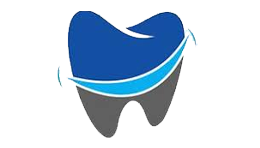
SmileRight Dentistry
Here's Sedate Dentistry Software in a nutshell. Time Saver. Money Saver. Easy to use. Amazing support. End of story.
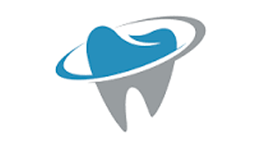
DentalClean
We learned about Sedate Dentistry from one of their other sister companies Edental. We switched from Xchart and this app works great.
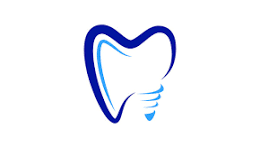
Metro Dentistry
The team at Sedate Dentistry has been amazing, especially Josh who helped integrate into our Edan X10. Much better than Xchart and a fraction of the price.
Contact Us
Contact Us
3165 West 4700 South, Suite A, Taylorsville Utah 84129



















